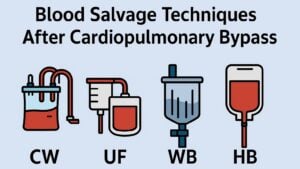Background: Venovenous extracorporeal membrane oxygenation (VV-ECMO) is associated with acute brain injury (ABI), including central nervous system (CNS) ischemia (defined as ischemic stroke or hypoxic-ischemic brain injury) and intracranial hemorrhage (ICH). There is limited data on prediction models for ABI and neurological outcomes in VV-ECMO.
Research Question: Can machine learning (ML) accurately predict ABI and identify modifiable factors of ABI in VV-ECMO?
Study Design and Methods: We analyzed adult (≥18 years) VV-ECMO patients in the Extracorporeal Life Support Organization Registry (2009-2021) from 676 centers. ABI was defined as CNS ischemia, ICH, brain death, and seizures. Overall, 65 total variables were extracted including clinical characteristics and pre-ECMO and on-ECMO variables. Random Forest, CatBoost, LightGBM, and XGBoost ML algorithms (10-fold leave-one-out cross-validation) were used to predict ABI. Feature Importance Scores were used to pinpoint variables most important for predicting ABI.
Results: Of 37,473 VV-ECMO patients (median age=48.1 years, 63% male), 2,644 (7.1%) experienced ABI: 610 (2%) and 1,591 (4%) experienced CNS ischemia and ICH, respectively. The median ECMO duration was 10 days (interquartile range=5-20 days). The area under the receiver-operating characteristics curves to predict ABI, CNS ischemia, and ICH were 0.67, 0.63, and 0.70, respectively. The accuracy, positive predictive, and negative predictive values for ABI were 79%, 15%, and 95%, respectively. ML identified pre-ECMO cardiac arrest as the most important risk factor for ABI while ECMO duration and bridge to transplantation as an indication for ECMO were associated with lower risk of ABI.
Interpretation: This is the first study to use machine learning to predict ABI in a large cohort of VV-ECMO patients. Performance was sub-optimal due to the low reported prevalence of ABI with lack of standardization of neuromonitoring/imaging protocols and data granularity in the ELSO Registry. Standardized neurological monitoring and imaging protocols may improve machine learning performance to predict ABI.







